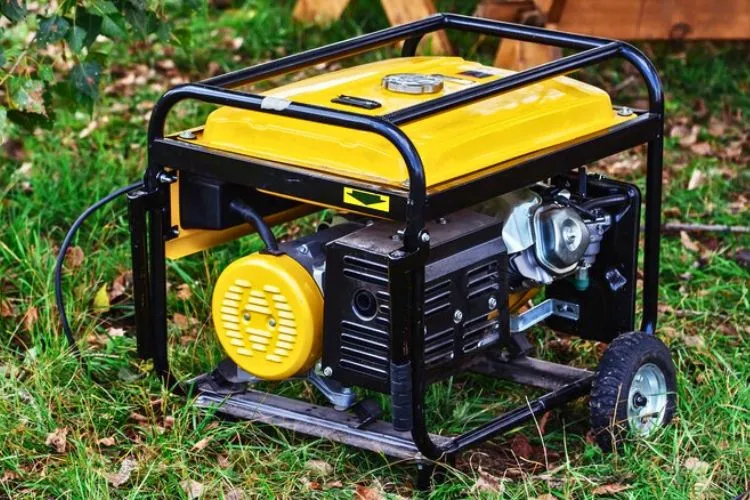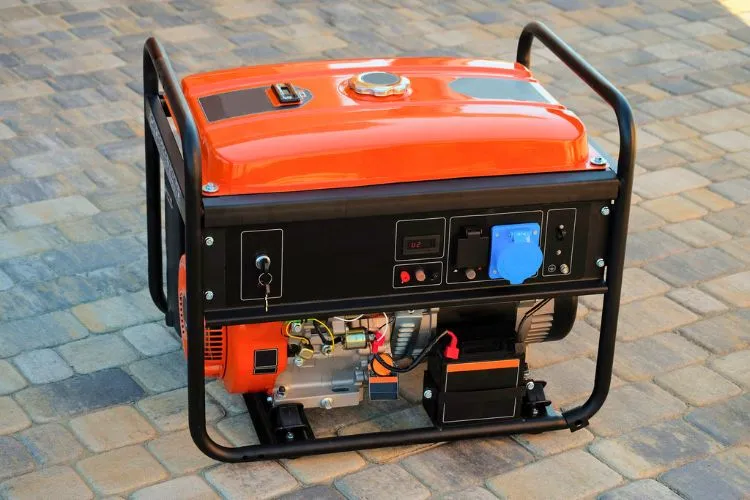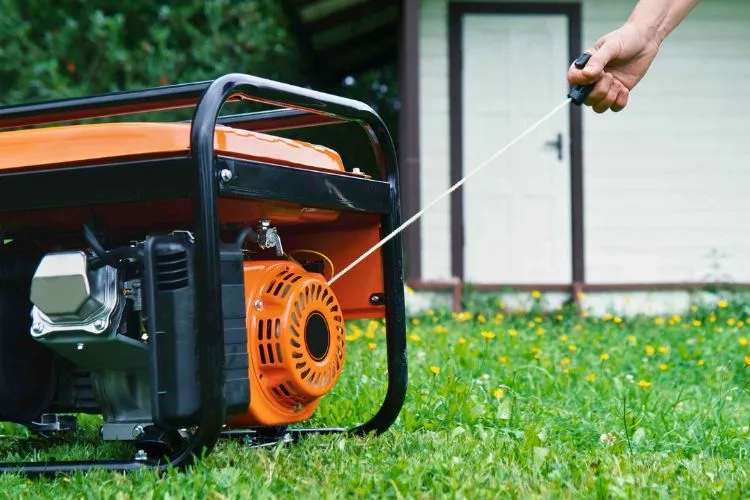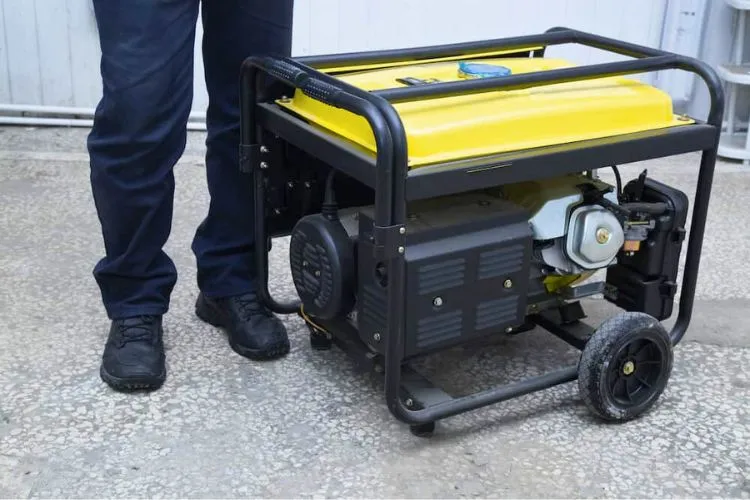Generators act as life-savers during power outages, and understanding their capacities is crucial.
With a 4000-watt generator, you have a versatile power source at your disposal, but exactly what can a 4000 watt generator run in a proper manner?
In this article, we’ll delve into understanding the operational potential of such generators.
We’ll explore various household appliances it can support and consider factors such as startup and running watts.

Whether you’re planning for an emergency or organizing outdoor events, this guide will unravel the puzzle of what you can expect from a 4000 watt generator.
What can a 4000 watt generator run at the same time?
A 4000 watt generator can power various appliances at the same time, provided their cumulative power requirement doesn’t surpass the generator’s capacity.
It’s crucial to consider both the starting (surge) watts and running (continuous) watts of each appliance.

Here is an example scenario:
- Refrigerator: Starting watts: 2200; Running watts: 700
- Microwave Oven (1000W): Starting watts: 2000; Running watts: 1000
- LED Lights (Five 100 watt bulbs): Starting watts: 500; Running watts: 500
- Laptop: Starting watts: 250; Running watts: 250
The total starting and running watts for the example above would be 4950 and 2450, respectively. Since the starting wattage exceeds the generator’s capacity, you would need to manage the order you start these appliances in to keep the starting load under the generator’s 4000-watt limit.
Once everything is running, the total load drops to 2450 watts, well within the generator’s running capacity. So, in this scenario, it would be possible to run all these appliances simultaneously.
Remember that these are approximate figures, and actual power consumption may vary based on the exact models of your appliances, their age, and condition. Always refer to your appliances’ manual to ascertain their power requirement.
How many watts does a whole house use?
The wattage required for a whole house can vary significantly depending on the size of the home, the number and type of electrical appliances used, the lifestyle of the inhabitants, and even the region’s climate.
On average, an American home uses about 900 kilowatt hours (kWh) per month which translates roughly to an average load of 1200 watts continuously.
However, at peak times—such as hot summer days when air conditioning units are running on high or cold winter evenings when electric heaters are being used—it can reach several thousand watts.
It’s important to know that this is just a ballpark figure. If you want to calculate more accurately, keep track of all your electrical appliances, including lighting, and note their wattages (usually written on the appliance or in the manual). The total wattage of all these items will give you an estimate of your home’s power usage.
Because energy usage can fluctuate so dramatically, whole-house generators are usually rated to handle between 5000-20,000 watts, with the average US home requiring about a 10,000- to 12,000-watt model.
Remember that having a professional energy audit is the most reliable way to understand your home’s electricity consumption.
Exploring the Capabilities of a 4000 Watt Generator
A 4000-watt generator presents an ideal power solution for various applications, be it outdoor events, camping trips or power outages. But predicting what appliances this generator can handle can be challenging.
We’ve pieced together this detailed guide to help you understand the range of gadgets or utilities that a 4000-watt generator can run.

Understanding Watts
To kick start our journey, we need first to understand the concept of watts (W). Watts measure the rate of energy-conversion or transfer and are directly proportional to the power an electrical device consumes.
It’s essential to understand that all devices have both starting (surge) watts and running (rated) watts. Therefore, it’s always recommended to calculate both while deciphering how many and what kind of appliances a 4000-watt generator can run.
Major Appliances a 4000 Watt Generator Can Run
Now, onto the main focus—what can a 4000-watt generator run? Here are a few typical home appliances and their average starting and running watts:
- Refrigerator or Freezer: Average-sized refrigerators or freezers usually need around 2200 starting watts and 700 running watts. Therefore, your 4000-watt generator can comfortably run your fridge.
- Microwave Oven: A 1000 watt microwave requires approximately 1000 to 2000 watts to run, depending on the model and capacity. Thus, your 4000-watt generator can manage it.
- Window Air Conditioner: A small to medium-sized window air conditioner also falls within the capacity of a 4000-watt generator. They require around 3200 starting watts and 1200 running watts.
Small Heating Systems: A small heating system, such as a 3000-watt furnace, can also operate efficiently on a 4000-watt generator.
Lesser Load Appliances
A host of smaller appliances or gadgets in your home can also be supported by this generator:
- Lights: Depending on their type, lights require between 60-600 watts.
- TV: An average LED TV will consume around 80-400 watts.
- Laptop: Typically uses about 200-250 watts.
- Phone Charger: These usually need less than 10 watts.
Considerations Before Running Appliances
It’s key to note that the total running watts of your devices should not exceed the maximum running watts of your generator. The same applies to starting watts. Also, remember to account for appliance age and condition, as they could affect power consumption.
A 4000-watt generator can power several crucial appliances at home or on a camping site. The secret lies in understanding starting and running watts, then prioritizing your power usage accordingly. This guide provides a framework for that, helping you effectively utilize your generator.
Power Management Tips
To get the most out of your generator while avoiding overloading, consider some of these power management tips:
- Start appliances one at a time: Appliances generally draw more power when they start. Starting them sequentially can avoid a surge that could potentially trip the generator.
- Prioritize your appliances: Only run the most necessary appliances and gadgets to prevent overloading. For instance, you might not need to use the microwave and air conditioner simultaneously.
- Consider Energy-efficient appliances: If you’re planning to use a generator regularly, investing in energy-efficient appliances can help reduce the total consumption.
Safety Measures
Safety should always be the top priority while using a generator. Keep the following points in mind:

- Never run a generator indoors or in a partially-enclosed space: Generators produce carbon monoxide, which can be fatal in confined spaces.
- Use appropriate extension cords: The extension cord should be designed for outdoor use and have a sufficient wire gauge to handle the power requirements of the appliances connected to it.
- Avoid operating in wet conditions: Unless the generator is designed to handle it, avoid operating it in wet or damp conditions to prevent electrocution.
- Regular Maintenance: Keep your generator in top shape with regular maintenance. Check the oil level frequently, clean the air filter, and drain old fuel.
With effective power management and safety measures, you can optimize the output of your 4000-watt generator while ensuring a safe environment.
Frequently Asked Questions (FAQs)
Will a 4000 watt generator run an AC?
Answer: Yes, a 4000 watt generator can run an AC. Small to medium-sized window air conditioning units typically need around 900 to 1200 running watts and around 2200 to 3200 starting watts. It’s important to check your AC’s specific power requirements before connecting it to the generator. Some larger models may have high starting wattage which might exceed what the generator can provide simultaneously with other devices.
Will a 4000 watt generator run a well pump?
Answer: Yes, a 4000 watt generator can run a well pump. Residential well pumps commonly require between 1000 to 2000 watts depending on their size and depth, with starting watts usually within the range of 2000 – 3000 watts. However, the exact power demand may vary based on the pump’s horsepower and other characteristics. It’s crucial to check product specifications for accurate values.
Can a 4000 watt generator run a furnace?
Answer: Yes, a 4000 watt generator can run a small furnace. Most gas, oil or propane furnaces need less than 3000 starting watts and below 1000 running watts. Electric furnaces, on the other hand, often require more power and thus, might not suit a 4000 watt generator. Always refer to your furnace’s manual to ascertain its actual power needs.
Conclusion:
A 4000 Watt generator offers substantial versatility and can power a variety of household appliances. Though it can support items such as small AC units, refrigerators, microwaves, and lights, remember that the total power demand must stay within the generator’s wattage limit.
Always consider both the starting and running wattage of your appliances to avoid overloading the generator. As every appliance’s power requirement can differ, always consult the product’s manual for accurate wattage info.
Proper power management will ensure your 4000-watt generator is both a valuable and reliable resource for power outages or outdoor adventures.


